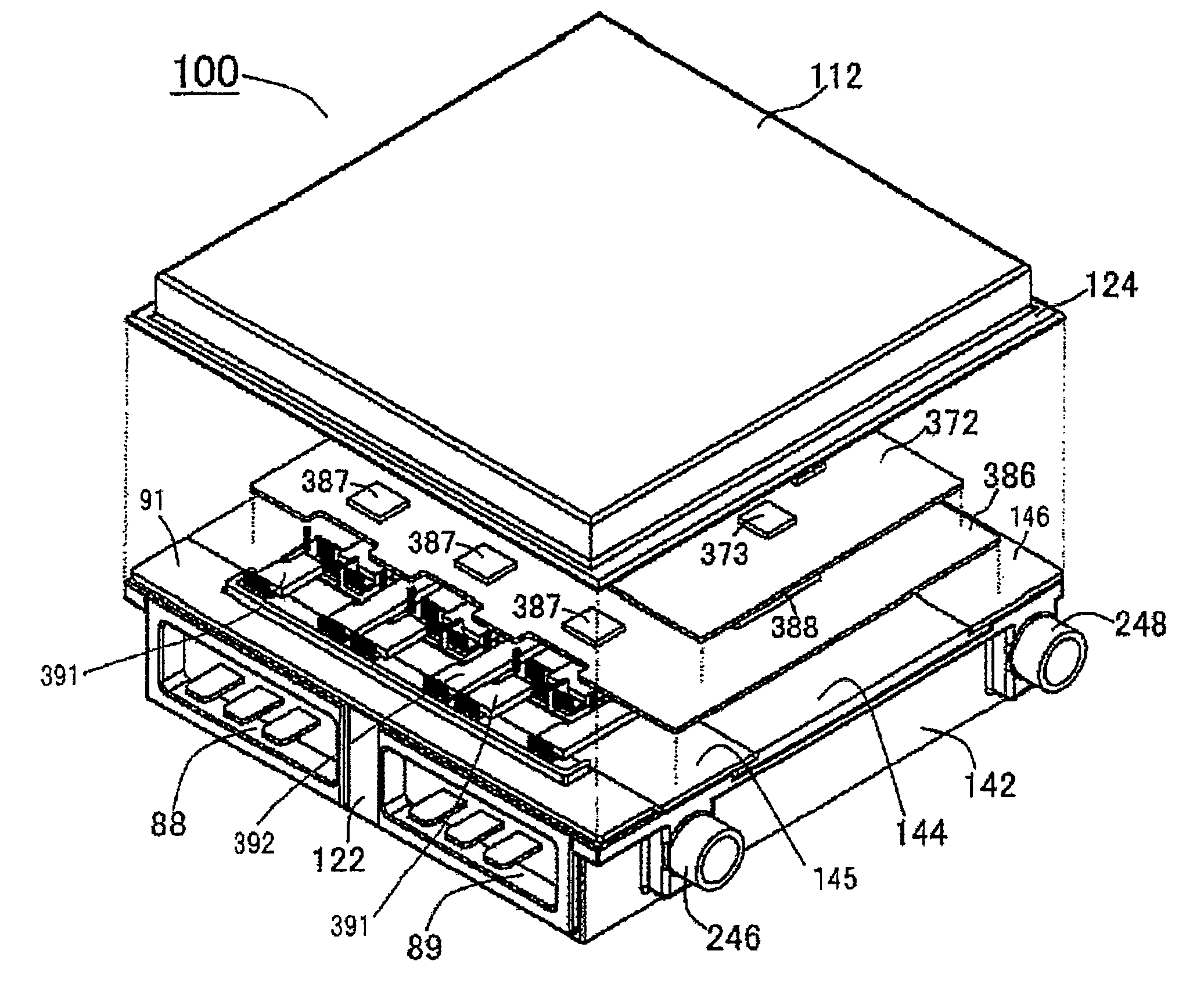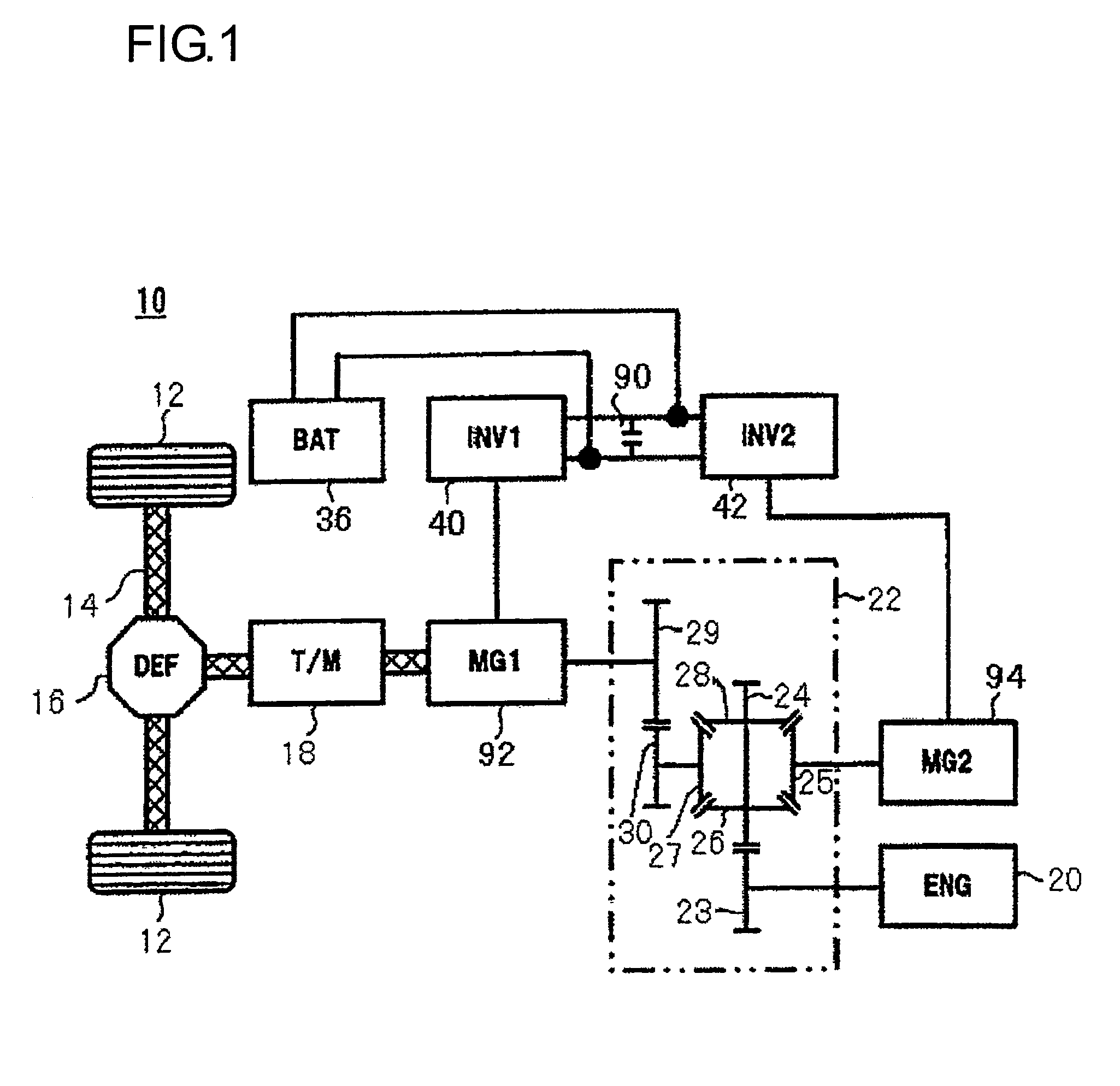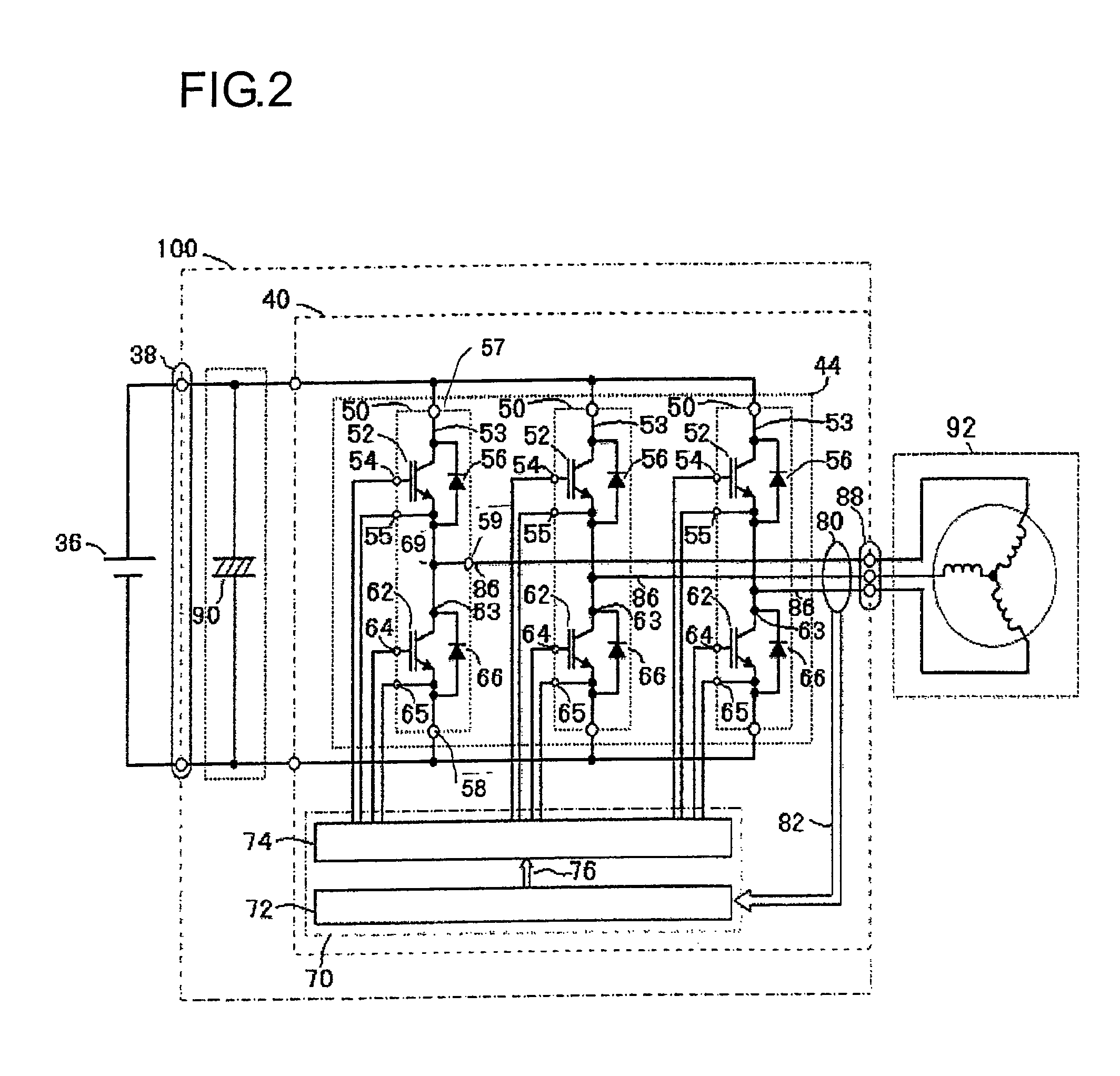Electric power conversion apparatus
a technology of electric power conversion and electric power semiconductor, which is applied in the direction of electric devices, lighting and heating devices, propulsion by batteries/cells, etc., can solve the problems of large heat generation in power semiconductors, limited increase in size and weight of electric power conversion apparatus, and small automobiles in general
- Summary
- Abstract
- Description
- Claims
- Application Information
AI Technical Summary
Benefits of technology
Problems solved by technology
Method used
Image
Examples
embodiment
[0083]Now, referring to the attached drawings, the electric power conversion apparatus according to an embodiment of the present invention is described in detail. The electric power conversion apparatus of the embodiment present invention is applicable to hybrid automobiles and pure electric cars. A typical example of control mechanism and circuitry of the electric power conversion apparatus when the electric power conversion apparatus according to the present embodiment is applied to the hybrid automobile is described with reference to FIGS. 1 and 2. FIG. 1 is a diagram presenting a control block of a hybrid automobile. FIG. 2 is a diagram illustrating circuitry of an electric system for driving a vehicle that includes an electric power conversion apparatus constituted of an inverter device having an upper and lower arms series circuit and a capacitor connected to the upstream side of the inverter device, a battery, and a motor generator.
[0084]The electric power conversion apparatu...
PUM
 Login to View More
Login to View More Abstract
Description
Claims
Application Information
 Login to View More
Login to View More - R&D
- Intellectual Property
- Life Sciences
- Materials
- Tech Scout
- Unparalleled Data Quality
- Higher Quality Content
- 60% Fewer Hallucinations
Browse by: Latest US Patents, China's latest patents, Technical Efficacy Thesaurus, Application Domain, Technology Topic, Popular Technical Reports.
© 2025 PatSnap. All rights reserved.Legal|Privacy policy|Modern Slavery Act Transparency Statement|Sitemap|About US| Contact US: help@patsnap.com



